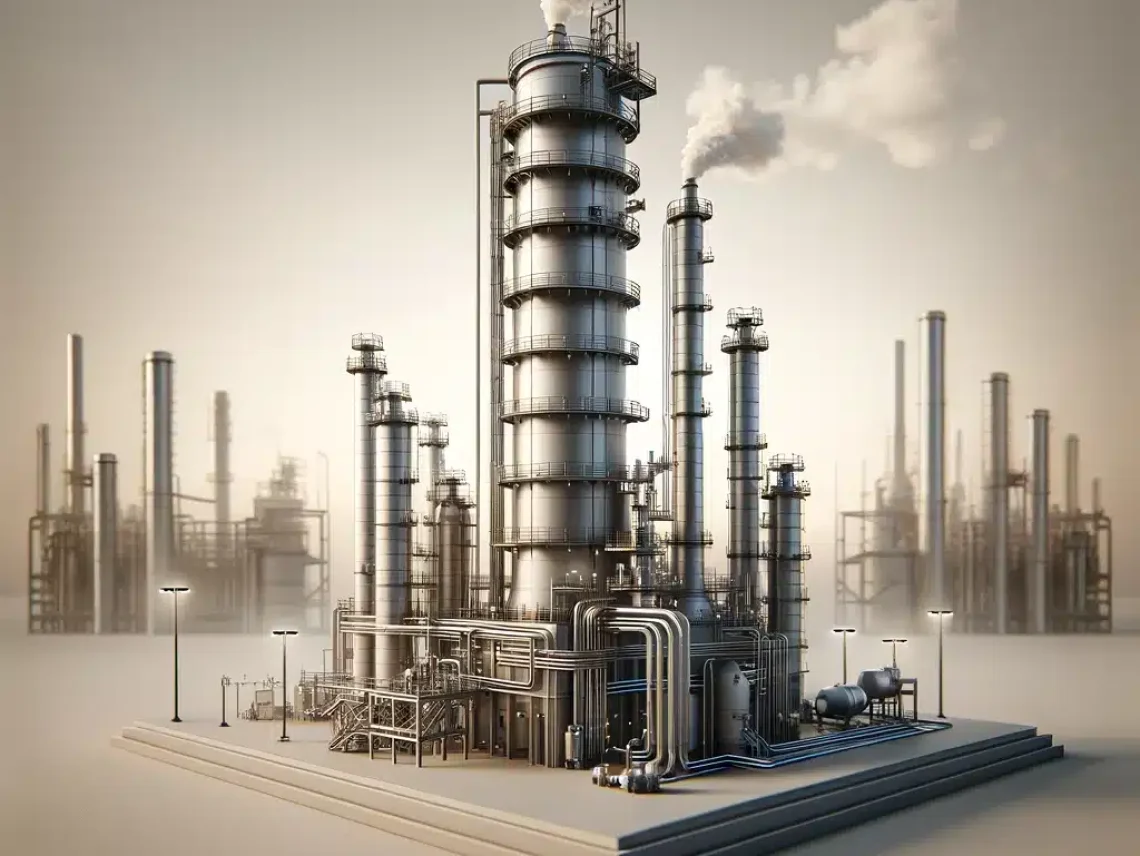
Desiccant dryers are crucial for environments where precision moisture control is essential. These systems use a chemical drying agent, or desiccant, to absorb water vapor directly from the air. At Red River LLC, we integrate desiccant dryer technology in our pressure vessel manufacturing to ensure optimal conditions during production and enhance the durability and performance of vapor recovery tower vessels.
Dehumidifiers, on the other hand, are typically used to maintain comfortable humidity levels in residential or commercial settings. Unlike desiccant dryers, these units condense moisture from the air onto a cooled surface, effectively reducing the humidity without the use of chemical absorbents.
Both desiccant dryers and dehumidifiers play pivotal roles in managing air quality but serve distinct functions. Desiccant dryers are integral in industrial applications requiring stringent moisture elimination, such as in the production of biogas and oil and gas industries, where precise moisture control is critical for safety and efficiency. Dehumidifiers are more common in protecting buildings and homes from the detrimental effects of excess moisture.
In the realm of mineral and element extraction and oil and gas sectors, desiccant dryers are indispensable. They provide the dry air necessary for safe and efficient operations, preventing corrosion and contamination. At Red River, our pressure vessels often incorporate desiccant dryers to maintain the integrity of sensitive processes and materials.
Desiccant dryers play a crucial role in ensuring safety in pressure vessel operations by providing a dry environment that prevents the formation of hydrates and ice in natural gas pipelines. This is especially important in the oil and gas industry, where the presence of moisture can lead to pipeline blockages or corrosion, potentially causing hazardous conditions. By maintaining low humidity levels, desiccant dryers reduce the risk of such issues, thereby enhancing operational safety and integrity.
In biogas production, desiccant dryers are essential for removing moisture from the gas streams to prevent water vapor from condensing and causing issues like pipeline corrosion or process inefficiency. Dry biogas burns more efficiently and is less likely to cause damage to engines and other equipment. Additionally, dry biogas is easier to upgrade to biomethane standards, making it more marketable and compliant with regulatory standards for use as a natural gas substitute.
Yes, desiccant dryers can be used alongside other drying technologies such as refrigerated dryers for enhanced moisture control. This combination is particularly effective in extremely moist environments or in applications where exceptionally low dew points are required. By using both technologies, industries can achieve more precise humidity control, which is critical in sensitive processes such as pharmaceuticals or high-tech manufacturing.
When selecting a desiccant dryer for pressure vessel applications, several factors should be considered including the specific moisture removal needs, the operating pressure, the chemical compatibility with gases or fluids involved, and the environmental conditions of the operation site. It’s also crucial to evaluate the regeneration capabilities of the dryer, as this will affect the ongoing operational costs and efficiency. Understanding these factors will help in choosing the most appropriate desiccant dryer that can deliver the desired performance and reliability.
Environmental regulations significantly impact the use of desiccant dryers in industrial applications, particularly in terms of emissions and energy usage. Regulations may dictate the type of desiccant materials used, as some have environmental implications in terms of disposal and regeneration. Industries are increasingly opting for environmentally friendly desiccants and energy-efficient dryer systems that can recover and reuse the heat generated during the drying process. Compliance with these regulations not only helps in protecting the environment but also enhances the sustainability of the operations by reducing operational costs.
In the realm of industrial solutions, Red River emerges as a pioneer, offering a diverse range of custom-engineered products and facilities. Among our specialties is the design and production of Custom/OEM Pressure Vessels, meticulously crafted to meet individual client requirements, ensuring performance under various pressure conditions. Our expertise extends to the domain of prefabrication, where Red River leads with distinction.
The company excels in creating prefabricated facilities, modules, and packages, reinforcing its stance as a forerunner in innovation and quality. This proficiency is further mirrored in their Modular Skids offering, where they provide an array of Modular Fabricated Skid Packages and Packaged equipment. Each piece is tailored to client specifications, underlining their commitment to delivering precision and excellence in every project they undertake.